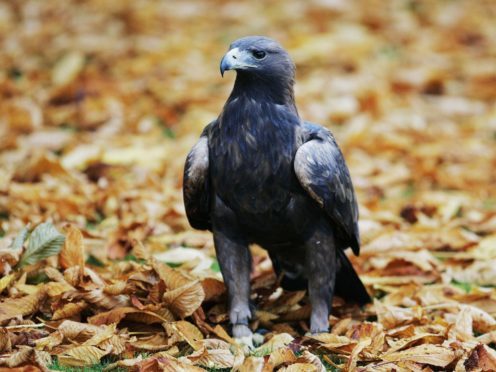Scientists have fully mapped out the genetic codes of the golden eagle in a development they believe will help efforts to protect and monitor the species.
Experts at the Wellcome Sanger Institute near Cambridge, working with the University of Edinburgh, announced that they have completed a project to sequence the golden eagle genome – the first time it has been done for the species.
The golden eagle is the first of 25 UK species to be sequenced in a project to learn more about the genetic make-up of animals including grey and red squirrels, robins and brown trout.
We are behind the scenes of the #25genomes project looking at some of the species samples that have just been sequenced on the @PacBio Sequel System. New films coming soon! @WGCengage pic.twitter.com/8Wg5p3cFsa
— Sanger Institute (@sangerinstitute) July 18, 2018
Those behind the project said there are around 300,000 golden eagles worldwide, with between 9,300-12,300 pairs living in Europe.
Despite having widespread populations worldwide, the 508 breeding pairs in the UK are largely restricted to the Scottish Highlands and islands, and many existing world populations are said to be small and declining.
Scientists from the university’s Royal (Dick) School of Veterinary Studies sent golden eagle samples to the institute.
The sequencing teams then extracted DNA from the samples and used the latest technology to generate the reference genome.
Project bosses said they believe the genome will help scientists and conservationists understand the diversity and viability of the species around the world.
They hope it will ultimately aid the monitoring of existing, reinforced and reintroduced populations of the birds, such as those in the South of Scotland Golden Eagle translocation project, which aims to bolster the protected species’ numbers.
Dr Rob Ogden, head of conservation genetics at the university and a scientific adviser to the project, said: “With the golden eagle genome sequence, we will be able to compare the eagles being relocated to southern Scotland to those already in the area to ensure we are creating a genetically diverse population.
“We will also be able to start investigating the biological effects of any genetic differences that we detect, not only within the Scottish population, but worldwide.”
Professor Sir Mike Stratton, director of the Wellcome Sanger Institute, said: “We are delighted to announce that the golden eagle genome, the first species of the 25 Genomes Project, is complete.
“Using the biological insights we will get from the golden eagle genome, we can look to our responsibilities as custodians of life on this planet, and tend life on earth in a more informed manner using those genome sequences at a time when nature around us is under considerable pressure.”










